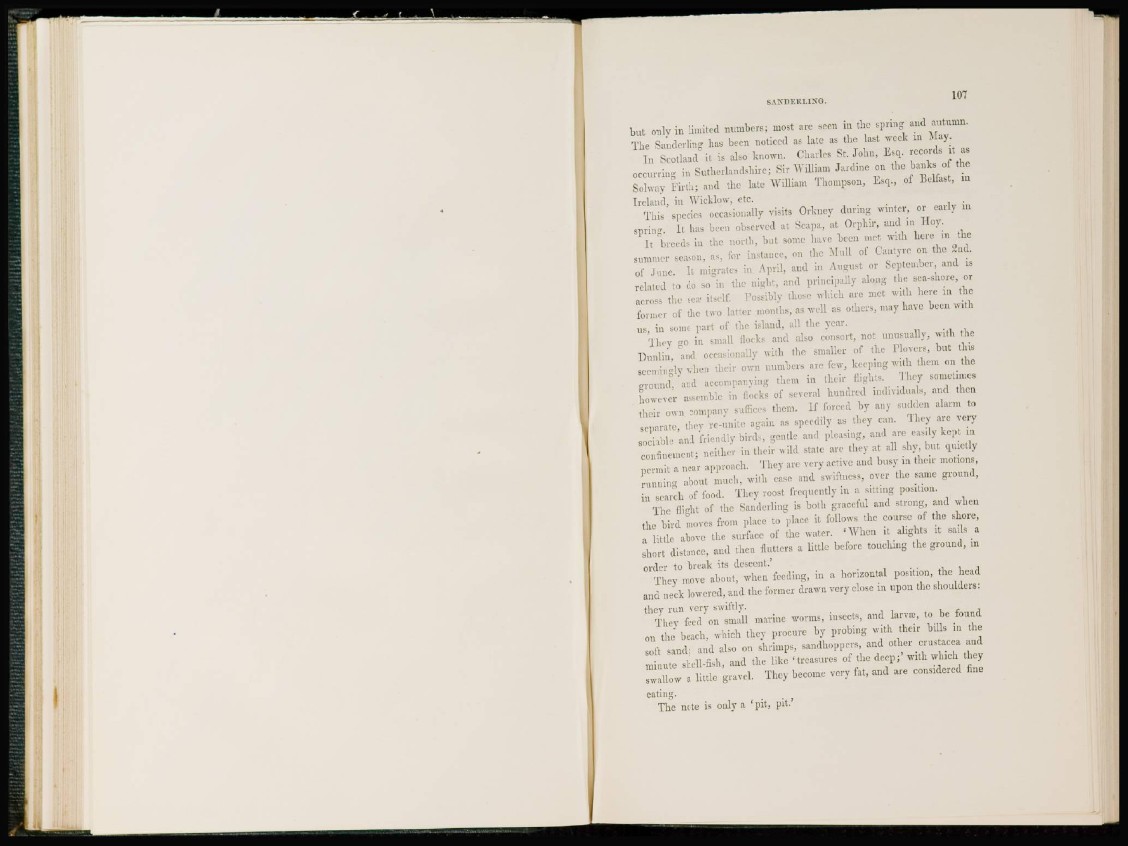
SAXDEULING.
but only in limited numbers; most are seen in the spring and autumn.
The Sanderling has been noticed as late as the last week in May.
I n Scotland il is also known. Charles Sr. John, Esq. records it as
occurring in Suthcrlandshirc; Sir "N illiam Jar dine on the banks of the
Solway Firth; and the late William Thompson, Esq., of Belfast, in
Ireland, in Wicklqw, etc.
This species occasionally visits Orkney during winter, or early in
spring. It has been observed at Scapa, at Orphir, and in Hoy.
It breeds in the north, but some have been met with here in the
summer season, as, for instance, on the Mull of Cantyre on the 2nd.
of June. It migrates in April, and in August or September, and is
related to do so in the night, and principally along the sea-shore, or
across the sea? itself, Possibly those which are met with here in the
former of the two latter months, as well as others, may have been with
us, in some part of the island, all the year.
They go in small flocks and also consort, not unusually, with the
Dunlin, and occasionally with the smaller of the Plovers, but this
seemingly when their own numbers are few, keeping with them on the
ground, and accompanying them in their flights. They sometimes
however assemble in Hocks of several hundred individuals, and then
their own company suffices them. If forced by any sudden alarm to
separate, they re-unite again as speedily as they can. They arc very
sochble and friendly birds, gentle and pleasing, and arc easily kept in
confinement; neither in their wild state are they at all shy, but quietly
permit a near approach. They arc very active and busy in their motions,
running about much, with case and swiftness, over the same ground,
in search of food. They roost frequently in a sitting position.
The flight of the Sanderling is both graceful and strong, and when
the bird moves from place to place it follows the course of the shore,
a little above the surface of the water. 'When it alights it sails a
short distance, and then flutters a little before touching the ground, in
order to break its descent.'
They move about, when feeding, in a horizontal position, the head
and neck lowered, and the former drawn very close in upon the shoulders:
they run very swiftly.
They feed on small marine worms, insects, and larva?, to be found
on the beach, which they procure by probing with their bills in the
soft sand; and also on shrimps, sandhoppers, and other Crustacea and
minute shell-fish, and the like 'treasures of the d e e p ; ' w i t h which they
swallow a little gravel. They become very fat, and are considered fine
eating.
The note is only a * pit, pit.'